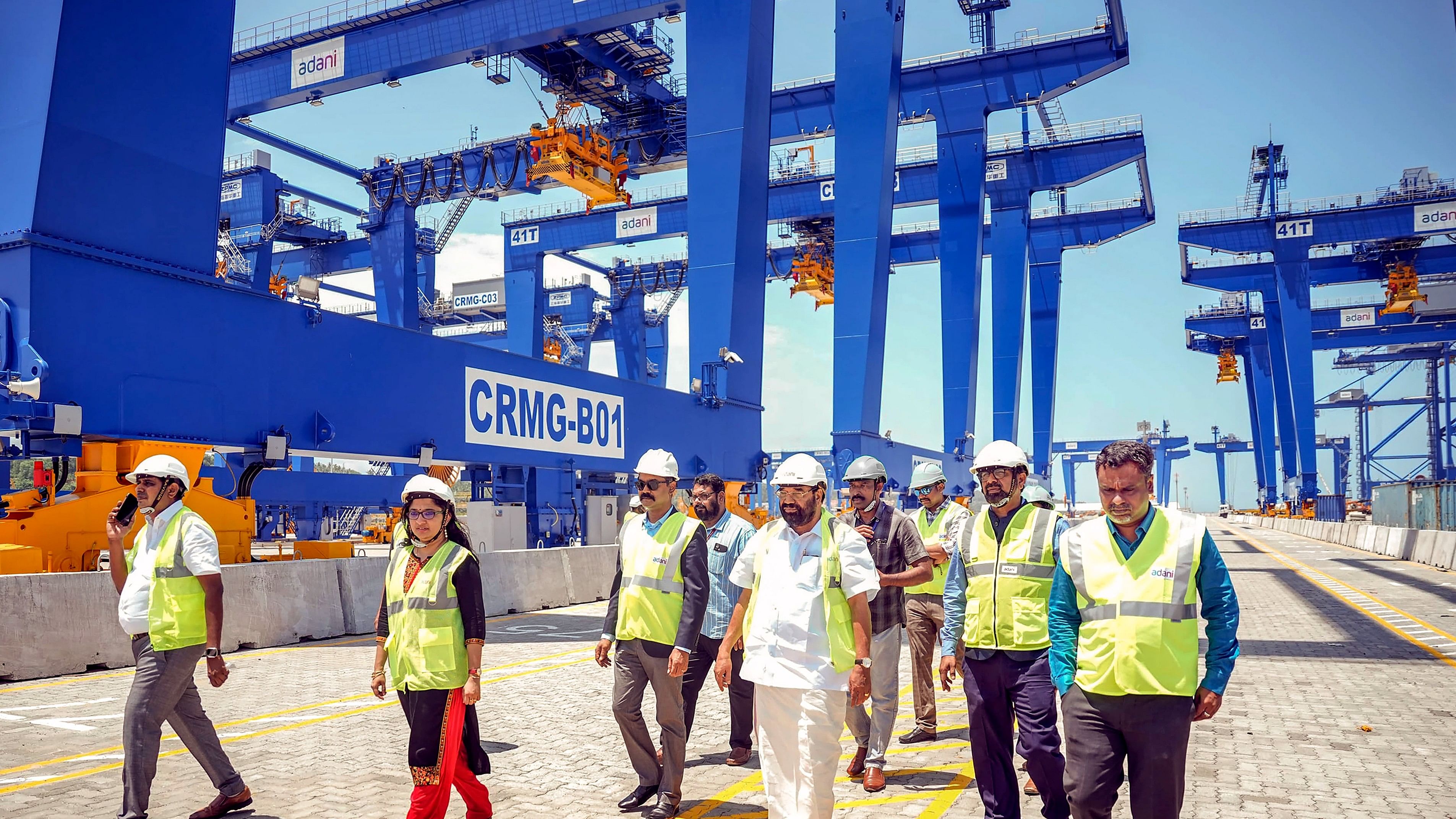
Kerala Minister for Ports V N Vasavan visits International Seaport at Vizhinjam, in Thiruvananthapuram, Wednesday, July 10, 2024.
Credit: PTI Photo
By P R Sanjai
Adani Ports and Special Economic Zone Ltd. plans to ramp up its investment to Rs 10,000 crore ($1.2 billion) to boost its southern India transshipment container port, according to people with knowledge of the matter, as it looks to lure some of the world’s largest ships.
The investment in the first-of-its-kind Vizhinjam port in the state of Kerala is part of the second phase of the project that is expected to finish by 2028, said people familiar with the Adani Group’s plans who did not want to be identified as the details are not announced.
It is also wooing the biggest container lines such as MSC Mediterranean Shipping Co., A.P. Moller - Maersk A/S, and Hapag-Lloyd to call in at the port, they added.
The port, which is located near the southernmost tip of India, close to the international shipping routes and has deepest shipping channels, is set to receive the first container vessel from Maersk on July 12 as part of a trial run in the 800-meter container berth.
The Vizhinjam port that was inaugurated in October is an effort by billionaire Gautam Adani’s conglomerate to put India on the map for the world’s biggest container ships and grab a bigger slice of the international maritime trade currently dominated by China. Such containers so far have been skipping India because the country’s harbors weren’t deep enough to handle the vessels, and docked instead at ports such as Colombo, Dubai and Singapore.
The funds will be used to increase the length of the existing berth at the port and extending the breakwater at the port, the people said. Breakwater is a rock barrier built out into the sea to protect a harbor from the force of waves.
Representatives of Adani Group, Mediterranean Shipping and Hapag-Lloyd did not immediately respond to emailed requests for comments. Adani Ports will invest as much as 60 billion rupees every year to expand capacity, Chief Executive Director Karan Adani had told reporters in October.
Transshipment refers to transferring cargo from an original ship to another, bigger mother ship at a port on the way to the cargo’s final destination.
The Vizhinjam terminal will have bunkering facilities to fuel ships and plans to buy additional cranes to boost capacity, besides building a cruise terminal that can accommodate large luxury lines, the people said.
The proximity to international shipping routes that account for 30% of global cargo traffic, and a natural channel that goes as much as 24 meters (79 feet) below the sea makes Vizhinjam an ideal hub for some of the biggest ships to call in.